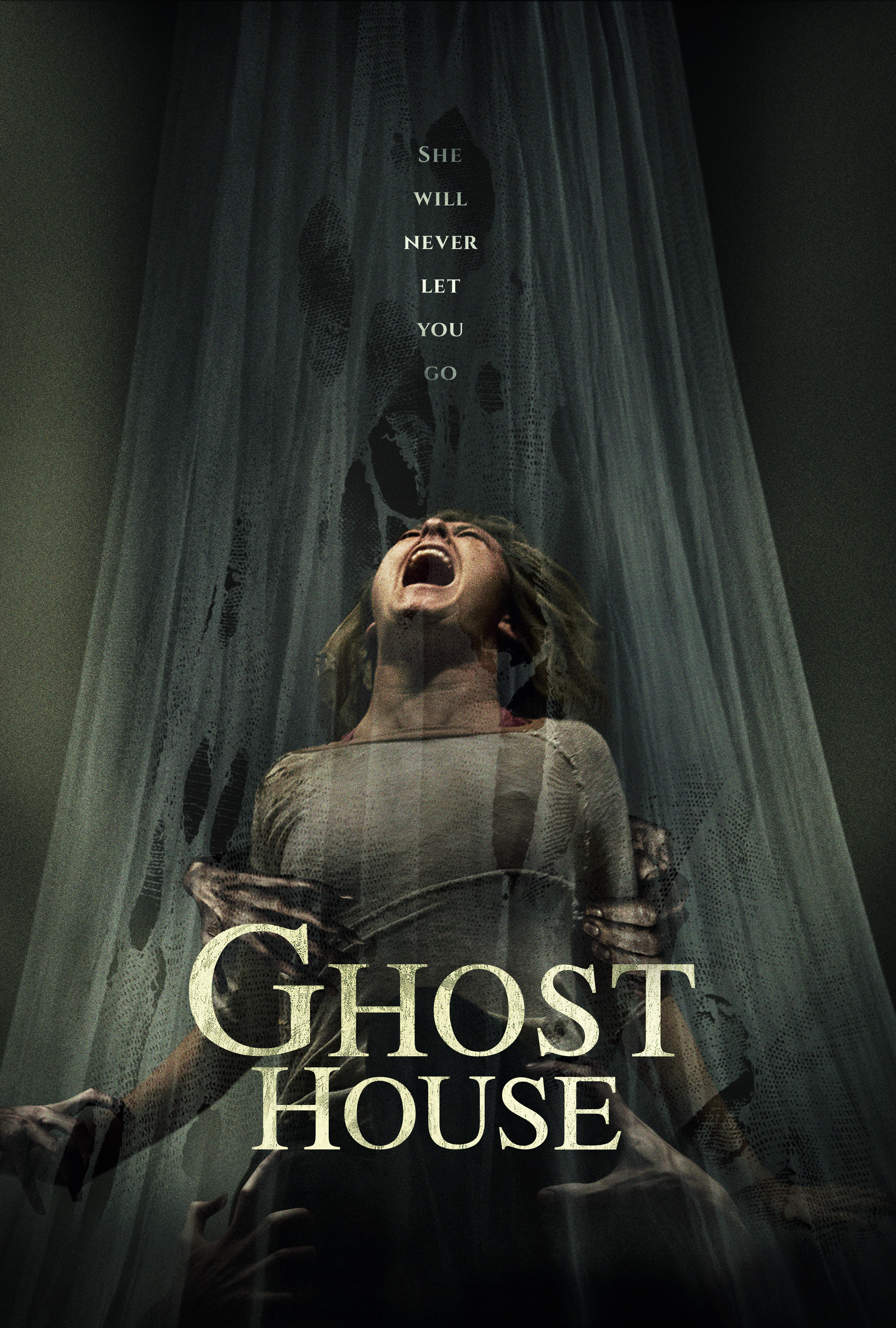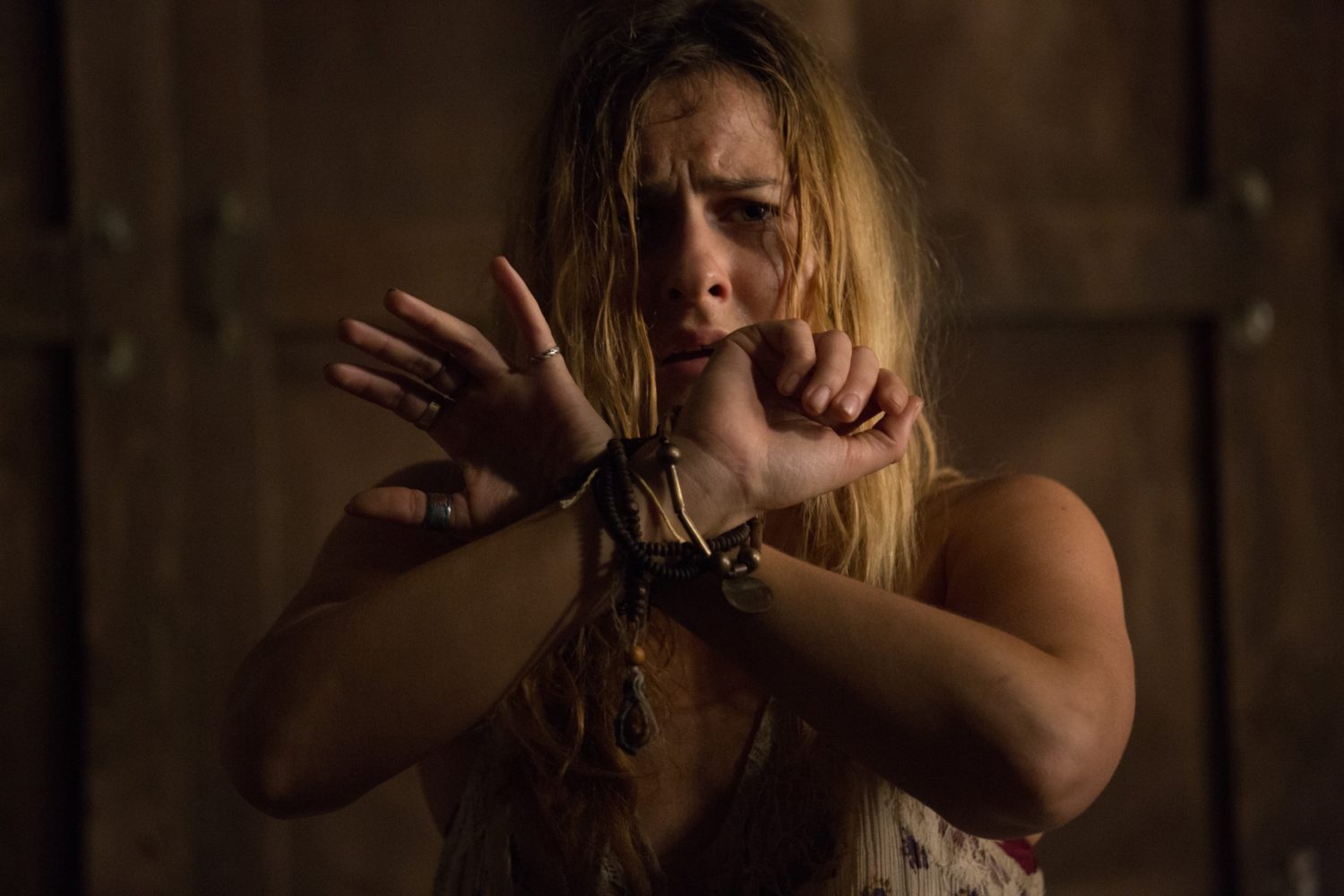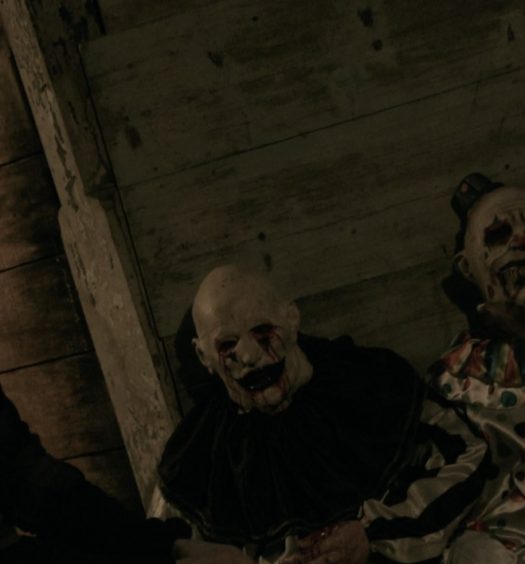Ghost House follows Julie (Scout Taylor-Compton) and Jim (James Landry Hébert), a young American couple on a romantic vacation to Thailand. Our introduction to the leads should feel familiar to anyone who’s traveled abroad, as they’re immediately approached by several eager tour guides speaking broken English and offering to show them around. The couple pairs up with Gogo (Michael New), an impossibly friendly cab driver who will either be one of your favorite or least favorite things about the film. His friendly disposition and comical accent, while never cartoonish or racist, remain as everpresent as his loyalty as he continues to chauffer our protagonists throughout the events of the film.
The transitions and establishing shots are easily one of Ghost House’s most enjoyable aspects, and I’d personally love to hang a few of these scenes on my walls.
Better known as a composer (working on music for sitcoms like The King of Queens and According to Jim), director Rich Ragsdale shows impressive chops in his feature-length debut as a visual storyteller. The opening minute of the film provides gorgeous, wide cityscapes of Bangkok, flowing into more tightly-framed shots of downtown activity resulting an immediate sense of place. These opening seconds also foreshadow the beautiful cinematography that permeates the rest of the film, aided by Pierluigi Malavasi, an award-winning director of photography also making a transition from TV to feature film. The transitions and establishing shots are easily one of Ghost House’s most enjoyable aspects, and I’d personally love to hang a few of these scenes on my walls.
Unfortunately, the performances and visuals are somewhat squandered by a predictable storyline. Even worse, plot convenience drives most of the interaction between the protagonists and the human antagonists, fellow tourists Robert and Billy. While bad decisions may be a staple of the genre, Jim’s terrible decision-making creates convenient emotional distance with Julie that only lasts long enough to render his skepticism of Robert and Billy’s motives impotent. But while co-incidental meetings and inexplicable decisions can be forgiven, Ghost House’s commits its ultimate sin by wasting an otherwise great performance by Taylor-Compton throughout the entire second half.
Instead, much of the latter half of the film relies on Hébert, who is not nearly as strong or as likable as his female counterpart.
The second and third acts of the film fail to empower Julie, as we see Taylor-Compton’s character converted into a stereotypical damsel in distress. She’s—quite literally—carried throughout the climax, requiring rescue from the men surrounding her—including Hébert, New and a fun performance Mark Boone Jr. Instead, much of the latter half of the film relies on Hébert, who is not nearly as strong or as likable as his female counterpart. Imagine, for example, if Sam Raimi decided to put Alison Lohman on bed rest for the second half of Drag Me To Hell, forcing us to watch Justin Long run from one plot device to the next to find the clues to save her soul.
Overall, Ghost House is gorgeously shot with solid lead performances and a fun turn from Boone, who you might recognize from Sons of Anarchy. The production design of the ghost also lends itself well to the overall creepiness factor. Unfortunately, these scenes are a little too thin overall and most of them were spoiled in the trailer. My recommendation for those going in for the jump scares and creepy visuals is to skip the trailer entirely for maximum surprise. In general, I recommend this film based on the cinematography and the performances from Taylor-Compton, New, and Boone alone.
Ghost House will be released theatrically on August 25, 2017.

Ghost House [Review]
Beautiful































